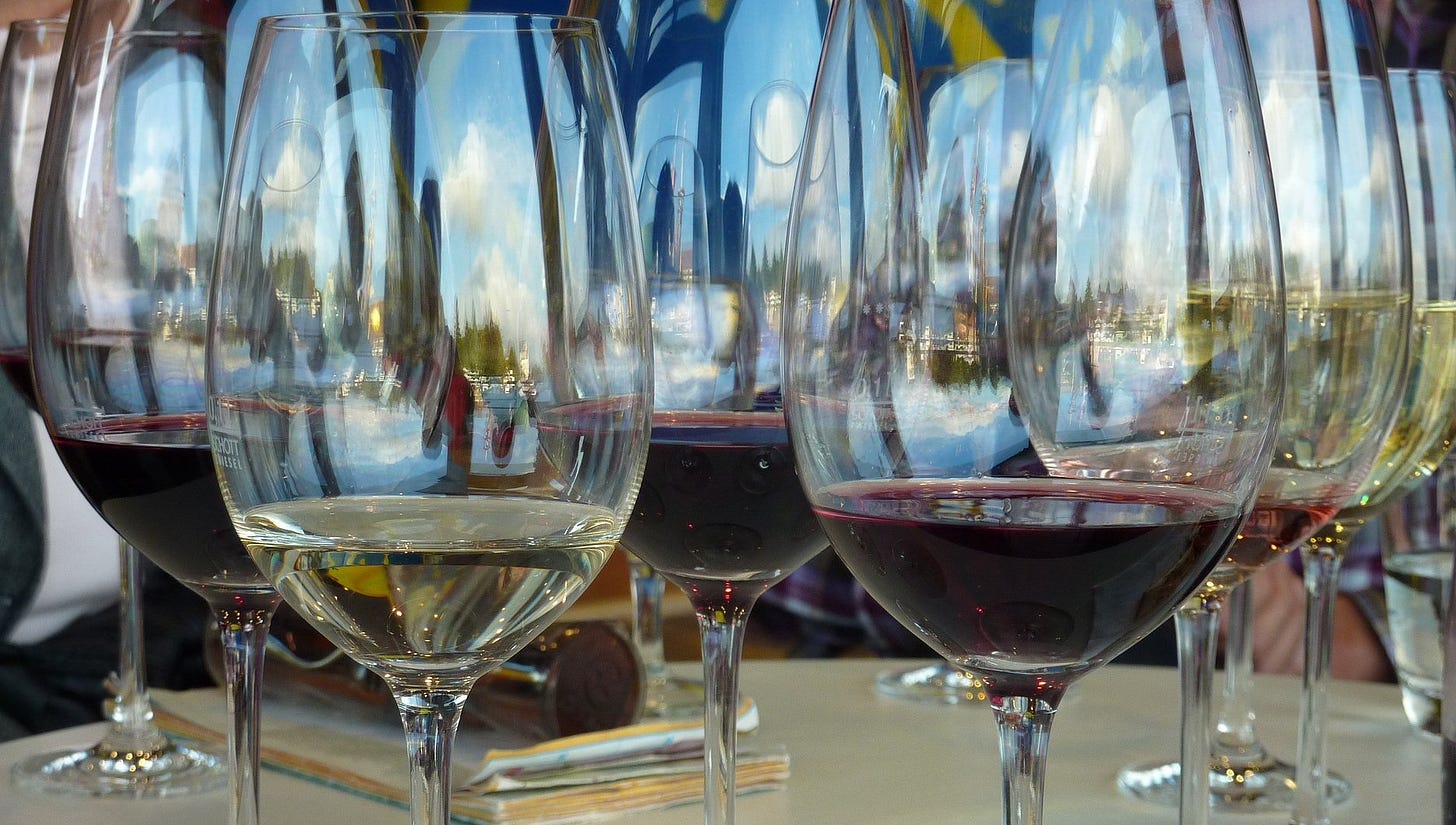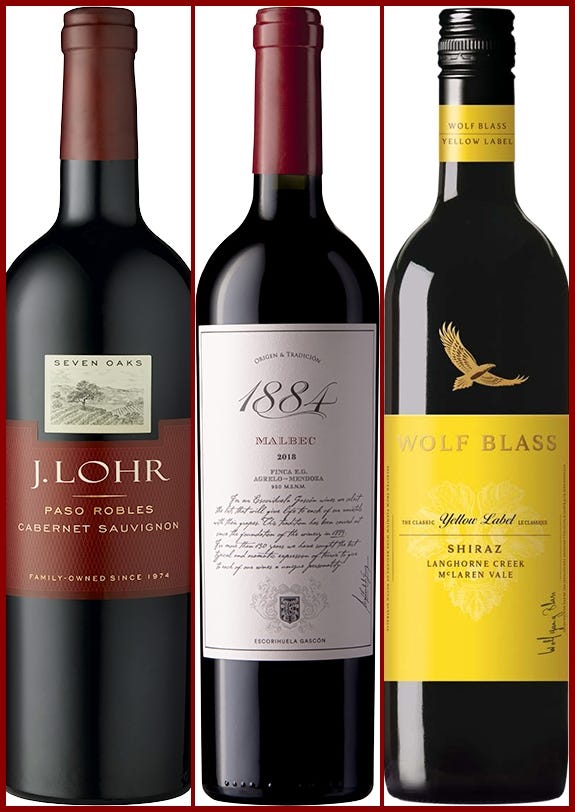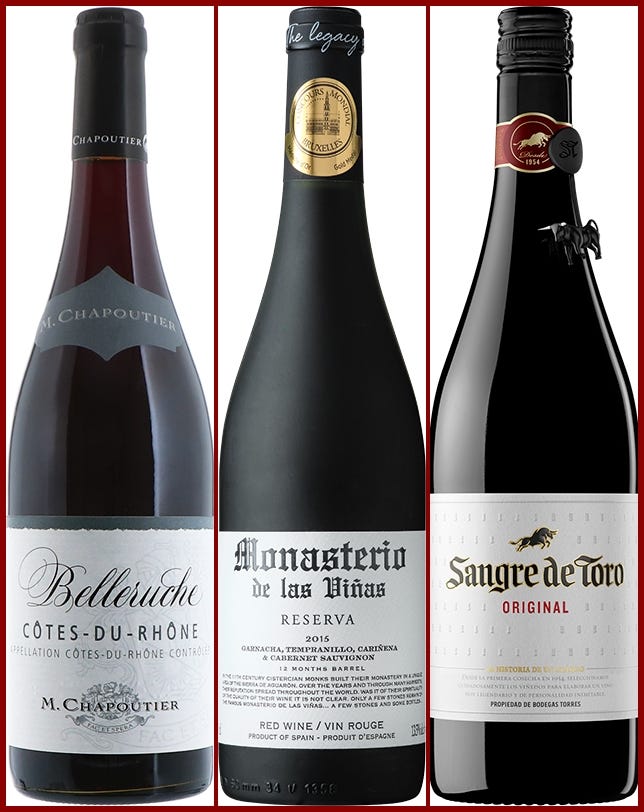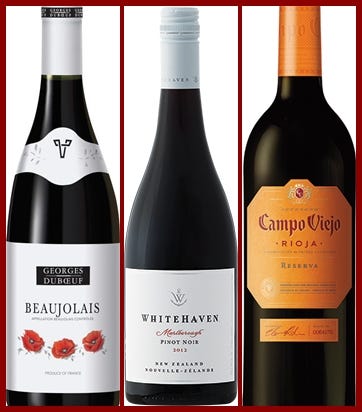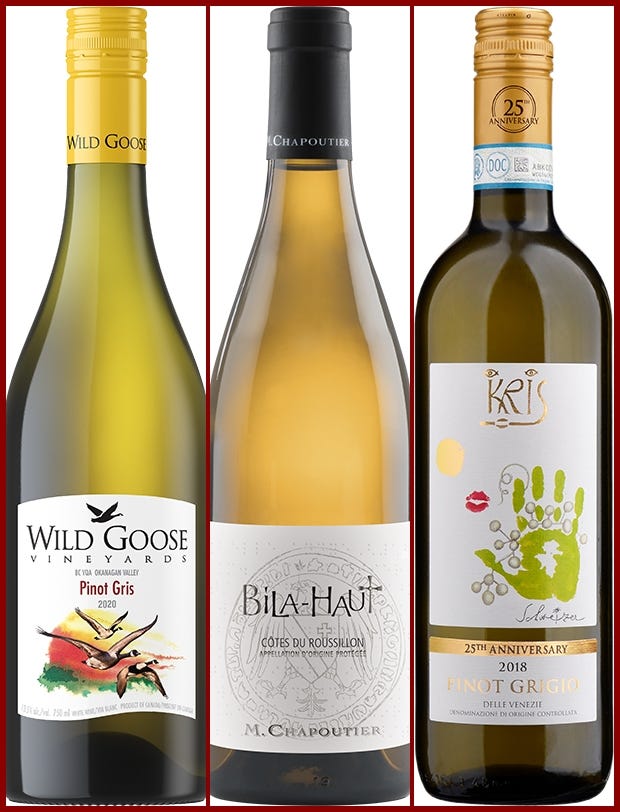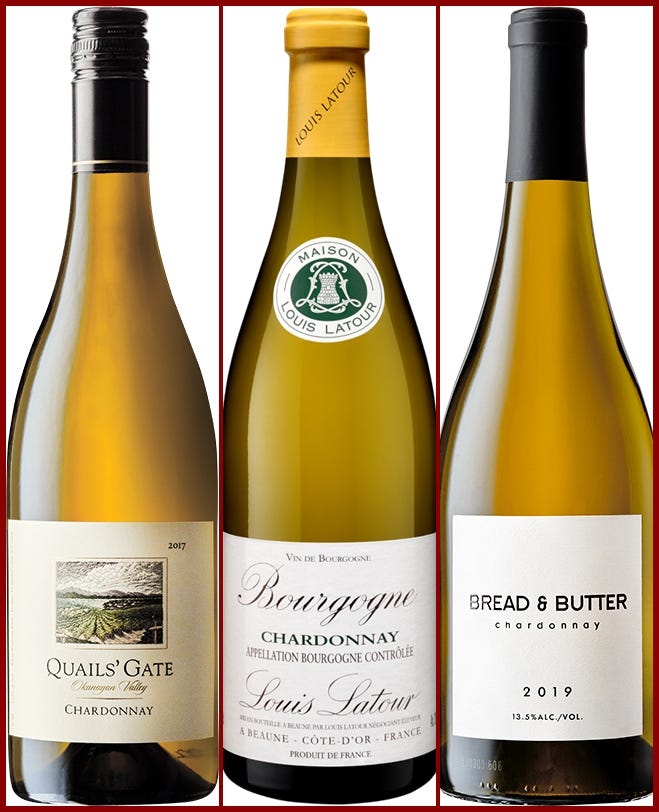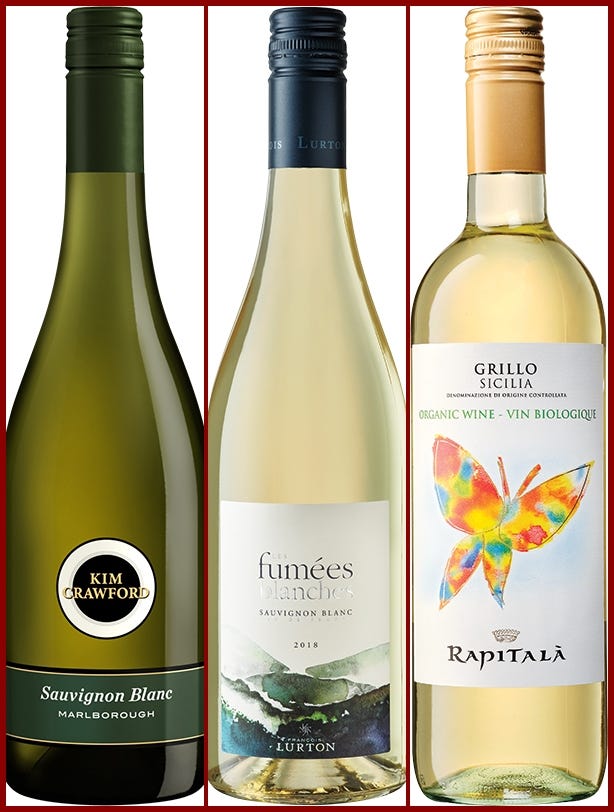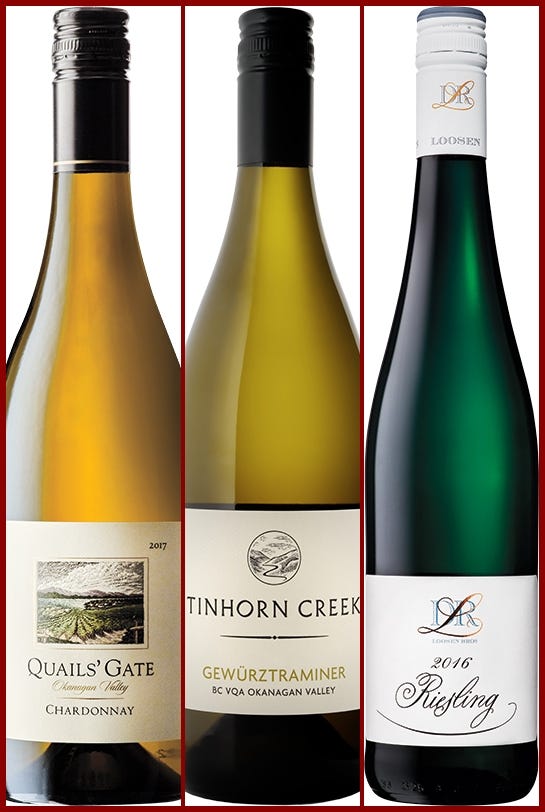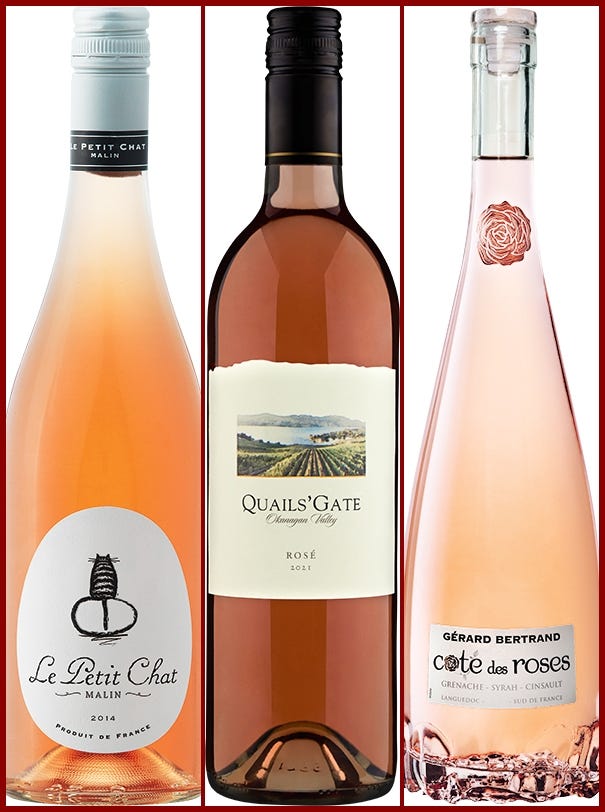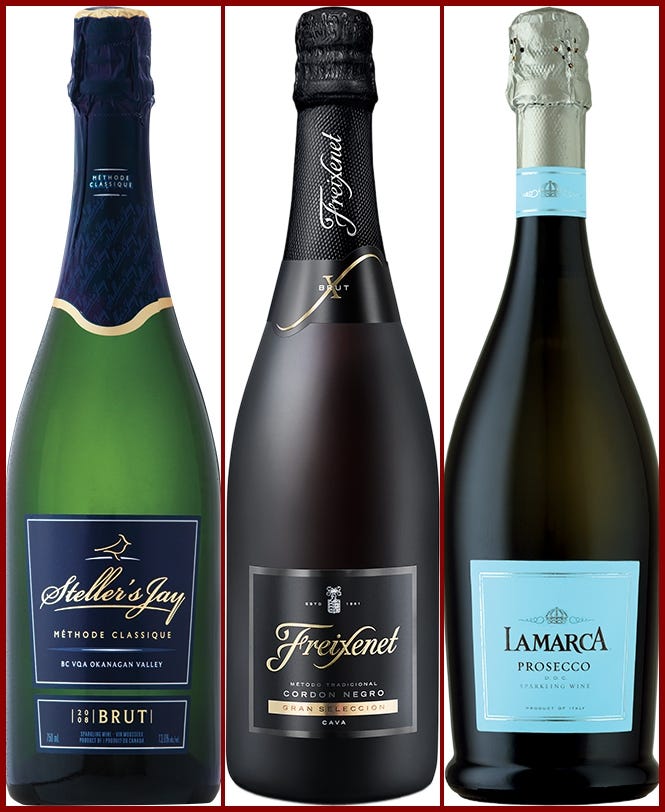The Free One - An Illustrated Guide to Wine Styles
Knowing Your Favourite Styles Helps You Find New Wines To Enjoy
Pro Wine Tips - The Free One edition going out to all subscribers
Just a moment here to touch on the difference between the free and paid editions. Pro Wine Tips - The Free One edition like this one for all subscribers contains information on a wide range of wine topics that will be different and complementary (no overlap) to those in the Pro Wine Tips edition for paid subscribers. Both editions will be published with about the same frequency (every two weeks). So please stay tuned to “The Free One”.
Free edition wine related articles are still aimed at helping you understand wine better and get more out of each glass too but are more general in nature with a focus on spotlighting particular grapes and regions, defining basic wine terms or giving you tips on ordering wine in a restaurant.
Pro Wine Tips in the paid edition are a deeper dive and include more detailed explanations and illustrations on subjects like: understanding how taste works, bettering your tasting technique, how much the right wine glass matters, suggested tastings, improving your taste memory, cooking with wine and a lot more.
Remember that as a subscriber, you can also see all the previous published newsletters on the related Pro Wine Tips website here .
Guide to Wine Styles - Knowing A Favourite Style Helps You Find Wines You Will Enjoy
A better understanding of wine styles is helpful in finding new wines you will enjoy, so here is a more detailed look into the definitions of the wine styles e.g. Ripe Fruit Forward Reds | Savoury Fruit Reds | Lighter Fruity Reds Etc..
Use these descriptions to get a better handle on wine styles you enjoy or might get comfortable with. All the wines pictured are available in B.C. Liquor Stores and except for the B.C. selections, can also be found in many cities around the world.
Ripe Fruit Forward Reds
This style is most typical of wines from the New World (North America, South America, Australia, South Africa). The fruit flavours here are ripe or even jammy (though still a dry wine) with rounded fruit flavours like black cherry, plum or raspberry and with subtle complementary dryness of tannins and a lushness to the mouthfeel. They are relatively bigger bodied, concentrated, oak influenced and often have higher levels of alcohol.
California Cabernet Sauvignon and Zinfandel, Australian Shiraz, and Argentinian malbecs would be examples of this style. Wines you might know in this style that are widely available in B.C. would include J. Lohr Seven Oaks Cabernet Sauvignon, 1884 Escorihuela Malbec or Wolf Blass Yellow Label Shiraz.
Savoury Fruit Reds
This style is more typical of the Old World from European countries such as France, Italy, Spain and Portugal. The style can also be packed with fruit flavour but it is of a slightly different nature. Savoury fruit reds also contain elements of tartness or astringency, herbs, earth, tobacco, oak, smoke or olive but they are balanced with the fruit in a way that can produce some really interesting complexities. The dominant fruit flavors include blackcurrant, blueberry and strawberry as well as more austere flavours not in the sweet fruit realm like cranberry or pomegranate. Some of the world's greatest wines are made in this style such as Bordeaux, Red Burgundy, Chateauneuf du pape, Hermitage, Barolo, and Chianti. Wines you might know in this style that are widely available in B.C. would include: Belleruche Cotes de Rhone, Monasterios Las Vinas or Sangre de Toro.
Note That Old World and New World Styles Are Growing Closer Together
The distinction between fruit forward and savoury fruit style reds is not as sharply marked as it was 10 or 20 years ago. New World winemakers have introduced Old World wine making approaches to give their wines more nuance and restraint.
Old World winemakers have increasingly made their wines with softer, less astringent tannins for example in order to appeal to a wider audience, especially in the New World. So many wines in the $12.00 to $30.00 range of the Wine Picks will be somewhere in between.
For wine drinkers who feel they strongly prefer one style over another because of particular bottles they have had (e.g. they feel they don't like Italian reds because they had one that was too dry and bitter), I encourage you to experiment with wines in that other category. You might be surprised at what you find. For Wine Picks, I try to let you know about wines that straddle the line between the two styles.
Lighter, Fruity Reds
These reds usually have a lighter colour, soft tannins and though also lighter in body can be very complex and elegant with good intensity and fruit flavour. The style of the fruit can be either ripe or savoury fruit depending on the area and winemaking style but could include strawberries, cherries, cranberries or pomegrante. Pinot noir (from New Zealand, Oregon, California, B.C.), tempranillo from Rioja, Spain and gamay as found in Beaujolais) are typical grapes here. Wines you might know in this style that are widely available in B.C. would include: Georges DuBoeuf Beaujolais, Whitehaven Pinot Noir and Campo Viejo Rioja Tempranillo.
Medium Bodied, Smooth Whites
Oak is not a noticeable feature of this wine style and some may be completely unoaked. These are generally easy drinking wines that can be show either riper forward fruit or savoury fruit. Supporting acidity is there but not prominent.
The flavours can vary greatly depending on the grape which would include light to medium weight chardonnay, pinot gris, pinot blanc as well as many Italian whites such as Soave. Flavours you might encounter include citrus fruit, stone fruits (peach, apricot, nectarine) or tropical fruits as well as cheese rind, nutty, floral or mineral notes.
Wines in this style can be sourced from almost any country in either the New World or the Old World. Wines you might know in this style that are widely available in B.C. would include: Wild Goose Pinot Gris from B.C., Chapoutier Bila Haut Blanc from France and Kris Pinot Grigio from Italy.
Bigger, Oak Influenced Whites
This style of wine tends to be fuller, more concentrated, buttery, richer and creamier with more oak influenced flavours and they can include notes of toast, hazelnuts, citrus, vanilla and tropical fruit.
We are talking here almost exclusively of chardonnay as it has a wondrous ability to pair with oak. Depending on the area it comes from and the winemaking style, the oak portion can be very prominent, stand side by side with the fruit, sing in the background or be rolled into the overall flavour profile.
Wines in this style from this grape can be sourced from either the New World or Old World but aside from France we are probably much more familiar with oak influenced wines from the New World. Such white Burgundies such as Bourgogne, Pouilly-Fuissé and Meursault are all in this category and wines labeled chardonnay can be seen from B.C., California, Argentina, Australia and many more.
Wines you might know in this style that are widely available in B.C. would include: Kendall Jackson Vintners Reserve Chardonnay from California Quails' Gate Chardonnay from B.C., Louis Latour Bourgogne Chardonnay or Bread and Butter Chardonnay from the United States.
Crisp Dry Whites
For this category, sauvignon blanc is the grape you first think of and is probably most familiar to you. New Zealand, France, Chile, Canada, Italy and South Africa all produce sauvignon blanc in quantity and appear on our wine store shelves.
Some of the usual descriptors for the smell and taste of sauvignon blanc can be odd, off putting or not helpful. The commonly used descriptive phrase for this grape "smells like cat pee on a sofa" is not something that makes you want to go out and buy one (though it is actually fairly accurate) and who knows what "gooseberry" (also quite accurate) or "grassy" tastes like?
Once you taste a few sauvignon blancs from different areeas (and perhaps find some white gooseberries, they do have a brief season in B.C.) it will make more sense. So let's just say that it will always have a high, zesty, crisp acidity (In France they describe some sauvignons especially from Sancerre, as nervous) and often, (in cooler climates), some element that is grassy, herbal or resembles green pepper. In warmer climates it can show green apple or even get a little citrusy or tropical.
Other areas and grapes in this style include Vinho Verde wines from Northern Portugal, Albariño from Rías Baixas in Northern Spain, Muscadet from France, as well as Frascati, Vernaccia, Vermentino and Verdicchio from Italy.
Wines you might know in this style that are widely available in B.C. would include: Sauvignon Blancs such as: Kim Crawford from New Zealand, Mission Hill 5 vineyards from B.C. , Sancerre Chateau De Sancerre from France, Lurton Fumee Blanche from France, and Lindemans Bin 95 from Australia. And wines from other grapes would be: Masi Pinot Grigio, Rapitala Grillo Sicilia and Bolla Soave, all from Italy.
Aromatic Whites
Wines made from the grapes typically involved with this wine style such as Gewurtztraminer, Riesling, Muscat and Ehrenfelser are usually dry but often smell sweeter than they taste. The flavours will vary according to the grape and area but can include lychee nuts, roses, green apple, honey, peaches, jasmine, lime peel, musky, tropical fruit and fragrant floral notes.
British Columbia has been very successful with these grapes and this style. As a result many of the widely available wines you might know in this style that are from B.C. and would include: Gewurtztraminers from Tinhorn Creek, Gray Monk or See Ya Later in B.C. . or Rieslings from Gehringer, Gray Monk or Quails' Gate in B.C. and Dr. Loosen Mosel from Germany.
Rosé
Made from red skinned grapes like pinot noir, grenache and syrah the grapes are usually soaked in their own juice for a short period to impart the colour and then the juice is bled off.
Though Rosé has a reputation for being off dry or even sweet, most Rosés are now made in a dry style. The wines are pale with a fruity character, soft tannins and a pleasantly crisp acidity. The fruit notes can show a wide range depending on the grape and include: strawberry, watermelon, cranberry, citrus, peach, raspberry and more.
Rosé is mostly associated with Provence and the South of France but Rosé has been such a phenomenon over the last few years that winemakers all over the world have gotten in on the act so there are now Rosés available from just about everywhere. B.C. with its cool climate also makes many lovely Rosés and If first noticed their quality about ten or twelve years ago.
The flavours are more subtle in this wine style than with many others, its more about balance, refreshing crispness and style but there is still quite a range from very light almost transparent Provence Rosés to darker, more intense and more food friendly versions.
Rosé wines you might know in this style that are widely available in B.C. would include:
Les Fleurs Du Mal, Le Petit Chat or Gerard Bertrand from France - Quails' Gate or Fern Walk from B.C. and Oyster Bay from New Zealand.
Sparkling
This is a huge and wide ranging style that includes Champagne and Crémant from France, Cava from Spain, Prosecco from Italy and many more. Basically think of it as a wine style that includes every other wine style - but with bubbles.
Methods, grapes, styles, sweetness, all of it is in the mix with sparkling wine. But generally speaking. if we are talking about dry white wine versions they will usually have light fruit flavours that could be citrusy or peachy/tropical as well as sometimes also have yeasty, brioche or toasty notes.
Wines you might know in this style that are widely available in B.C. would include: Steller's Jay from B.C., Freixinet from Spain and La Marca Prosecco from Italy.





